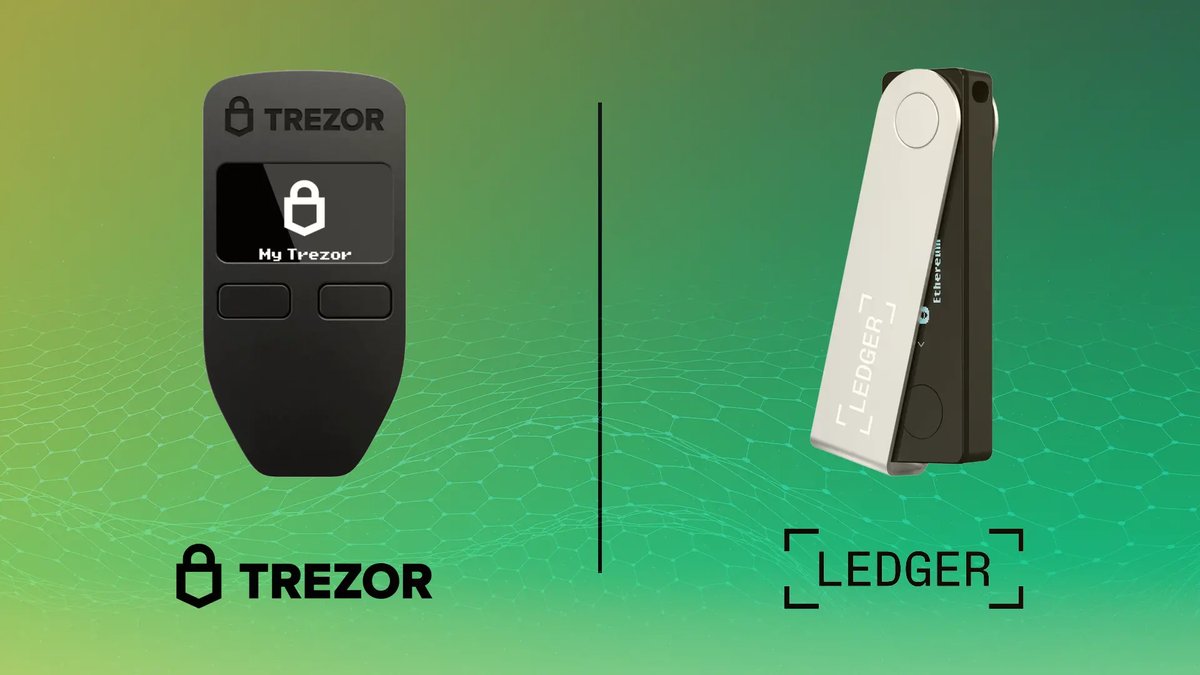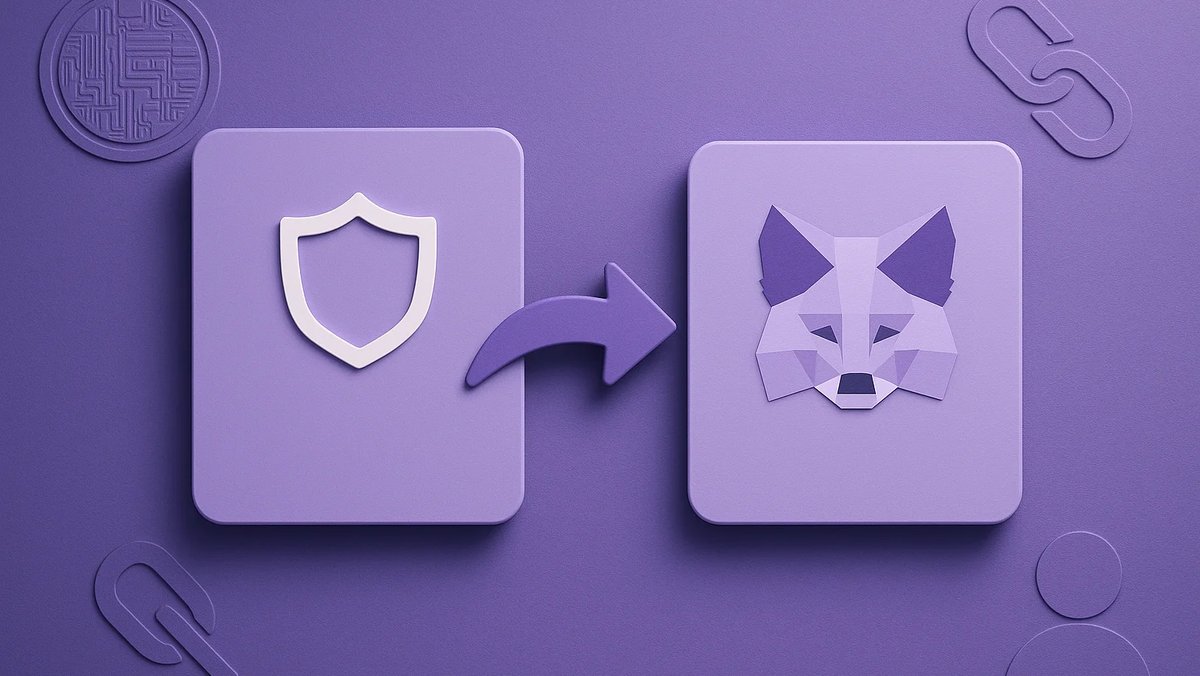Ledger vs. Trezor Hardware Wallets: A Deep, Practical Comparison
Ledger and Trezor sit at the top of the hardware wallet market, but they make different design tradeoffs. This guide goes beyond marketing copy to compare their security models, firmware philosophies, recovery options, privacy tooling, UX, and advanced features so you can match the right device to your risk profile and workflow.
TL;DR
Ledger favors a closed Secure Element and a polished, all-in-one app (Ledger Live) with broad asset support and Bluetooth on select models. Trezor prioritizes open-source firmware, transparent security, and a frictionless desktop app (Trezor Suite) with strong Bitcoin UX and optional advanced backups. Both are non-custodial and significantly safer than hot wallets when used correctly.
Security Architecture
Secure Element vs. General-Purpose MCU
- Ledger: Private key material is isolated inside a Secure Element (SE) chip with hardware countermeasures against physical extraction. Critical logic runs in the SE, and apps communicate via a constrained API. Pros: strong physical tamper resistance. Cons: parts of the stack are closed-source.
- Trezor: Historically relies on an auditable, open-source firmware running on a general-purpose microcontroller (MCU). Pros: maximum transparency and peer review. Cons: fewer hardware-level anti-extraction defenses, so security relies on sound design, passphrase discipline, and threat model fit.
Attack Surface & Threat Models
If your risk involves remote malware, both wallets dramatically reduce compromise risk versus hot wallets by isolating signing and requiring on-device confirmation. If you face hands-on attackers (seizure, lab access), an SE can raise the bar; conversely, open-source visibility may be preferred by users who value verifiability over opacity.
Firmware, Openness & Updates
Closed vs. Open
- Ledger: Security-critical components are proprietary. Independent audits exist but do not equate to full public review of SE internals.
- Trezor: Firmware, bootloader, and many design choices are open-source, enabling community scrutiny and faster community-led tooling.
Upgrade Cadence & Policy
Both vendors ship regular firmware updates for new coins, UX tweaks, and security fixes. Best practice: apply updates after the community has had time to test, and always verify device prompts during upgrade flows.
Seed, Backup & Recovery
Standards & Passphrases
- Both support BIP39 seed phrases and optional 25th-word passphrase (plausible deniability and extra compartmentalization). Losing the passphrase means losing access even if the seed is intact.
Advanced Backups
- Trezor: Offers Shamir Secret Sharing (SLIP-39) on supported models, splitting a seed into multiple shares (e.g., 2-of-3) to reduce single-point-of-failure risk.
- Ledger: Uses standard single-seed backups; users often add redundancy with metal seed storage and passphrase wallets.
Whichever device you pick, prioritize offline metal backups, clear custody of passphrases, and periodic recovery drills on a spare device (never on an internet-connected app).
Transaction Flow & UX
Screens, Buttons, and Human Factors
- Ledger: Compact form factor; smaller screen on some models; Bluetooth on select devices for mobile convenience. On-device prompts are concise; Ledger Live guides novices well.
- Trezor: Emphasis on clarity and, on higher-end models, a color touchscreen. The larger UI makes address and amount verification more comfortable, especially for long addresses or PSBT details.
Bitcoin UX (PSBT, Coin Control)
- Trezor Suite provides strong coin control, labeling, and PSBT signing flows out of the box; integrates smoothly with privacy-forward desktop wallets (e.g., Sparrow, Specter).
- Ledger supports PSBT and coin control via Ledger Live and third-party wallets; the experience is improving but may lean more on external tooling for power users.
Connectivity & Platforms
Desktop, Mobile, and Browser
- Ledger Live: Desktop & mobile app for portfolio, swaps, staking, and NFT viewing on supported chains; Bluetooth enables cable-free mobile use on compatible models.
- Trezor Suite: Desktop-first with a clean UX; optional Tor routing for privacy; WebUSB/WebHID support in modern browsers; mobile connectivity typically via cable or third-party wallets.
DeFi & DApp Access
- Both integrate with MetaMask and WalletConnect-compatible apps to sign transactions in DeFi, NFTs, and L2s. Expect more manual reviews (gas, calldata) on hardware screens; that is by design.
Asset Support & Advanced Features
Multi-Chain Coverage
- Ledger: Very broad coin/token support, including many EVM and non-EVM chains through Ledger Live or partner apps.
- Trezor: Excellent Bitcoin support; solid coverage for major coins; relies more often on third-party wallets for some ecosystems.
Staking, NFTs, and L2s
- Both support staking flows for select networks via native apps or partners; both can sign NFT transfers and interact with L2s through connected wallets.
Privacy Considerations
Data Telemetry and App Defaults
- Ledger Live and Trezor Suite allow telemetry opt-outs. Trezor Suite offers easy Tor toggles; Bitcoin-only firmware options exist for minimal attack surface on certain Trezor models.
Best Practices
- Use fresh receive addresses; enable coin control for UTXO hygiene; consider using privacy wallets for sensitive flows; keep device serials and seed information off cameras and cloud notes.
Supply Chain, Tamper Resistance & Setup
Out-of-the-Box Safety
- Buy direct from the manufacturer or vetted resellers; verify anti-tamper seals only as secondary indicators (seals are not security).
Initial Provisioning
- Always generate the seed on-device; write to metal; verify addresses on the hardware screen; perform a test restore on a spare before moving significant funds.
Pricing & Value
Where the Money Goes
Ledger often prices a premium for SE hardware, Bluetooth, and the polished integrated app experience. Trezor offers strong value at multiple tiers, with better visibility into exactly what the firmware is doing. For most investors, either price point is trivial relative to the assets protected.
Which One Should You Choose?
Choose Ledger if you prioritize:
- Secure Element-based physical tamper resistance.
- Polished, integrated portfolio management (Ledger Live), broad coin coverage, and Bluetooth mobility.
- Frequent DeFi/NFT use where app integrations and mobile ergonomics matter.
Choose Trezor if you prioritize:
- Fully open-source firmware and auditable behavior.
- Clarity of on-device prompts (touchscreen on higher-end models) and excellent Bitcoin UX (coin control, PSBT).
- Advanced backups like Shamir Secret Sharing and optional Tor-by-default desktop privacy.
Side-by-Side Snapshot
At a glance
- Security Core: Ledger = Secure Element (closed components); Trezor = Open firmware on MCU.
- Openness: Ledger = mixed/closed; Trezor = open-source-first.
- Backups: Both = BIP39 + passphrase; Trezor adds SLIP-39 Shamir on supported models.
- UX: Ledger = compact, mobile-ready; Trezor = larger UI, strong desktop flow.
- Ecosystem: Both = MetaMask/WalletConnect; Ledger Live broader native coverage.
Frequently Asked Questions
Can I move from one brand to the other?
Yes. Both implement BIP39. You can restore your seed on a different brand (mind the passphrase if used). Always test with small amounts first.
Is a Secure Element mandatory?
It depends on your threat model. For most users, either device is a huge improvement over hot wallets. SEs raise the cost of certain hands-on attacks; open-source firmware raises verifiability. Pick the tradeoff you prefer.
Which is better for DeFi?
Both work via MetaMask/WalletConnect. Ledger Live covers more assets natively; Trezor pairs nicely with power-user desktop wallets. Your app stack will matter more than the brand.
What about multisig?
Both can participate in multisig schemes (e.g., via Sparrow, Specter, or other coordinators). Multisig can mitigate single-device loss at the cost of added complexity—practice recoveries before using at size.
Bottom Line
Ledger and Trezor are both excellent, secure choices that reduce real-world risk when used with sound operational hygiene. If you value a Secure Element, mobile ergonomics, and broad native coverage, Ledger is compelling. If you value open-source transparency, Bitcoin-centric tooling, and advanced backups, Trezor is hard to beat. Either way, your process—metal backups, passphrase discipline, test restores, and careful transaction review—will do more for your safety than any single spec on the box.







